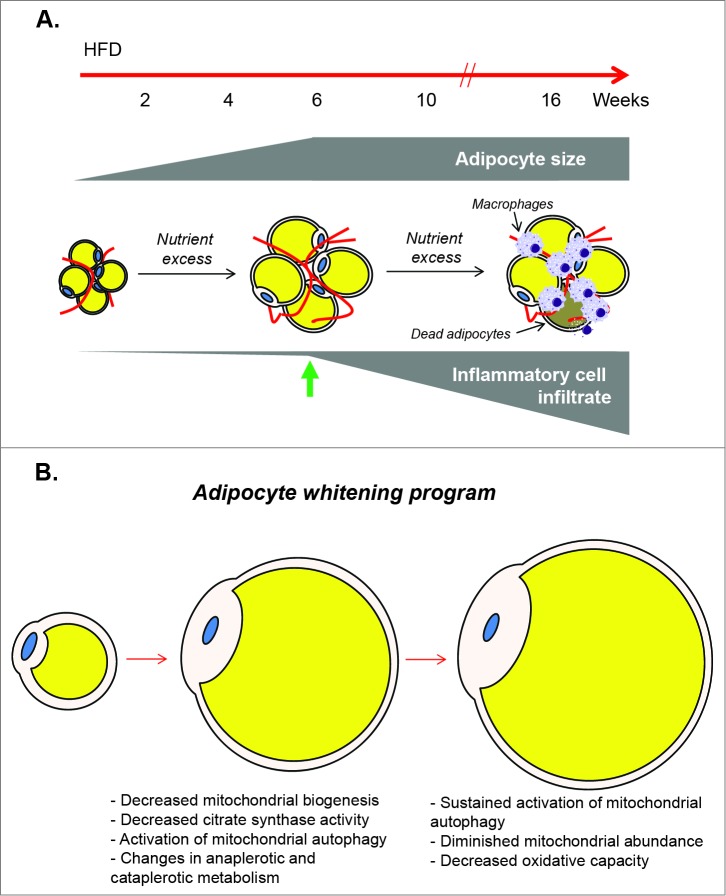Figure 1.
Metabolic changes in white adipocytes during obesity. (A) Considerations for assessing metabolic changes in adipocytes under conditions of nutrient excess: White adipose tissue from mice fed a high fat diet (HFD) was used to identify and measure the metabolic changes that occur in adipocytes during obesity. Near maximal increases in adipocyte size were identified with six weeks of HFD (green arrow), which preceded the increases in macrophage infiltration known to occur with longer durations of nutrient excess. Thus, this time point of high fat feeding provided a model to study adipocyte metabolism in the context of obesity, in the relative absence of infiltrating macrophages which possess high metabolic activity. (B) Putative model of an adipocyte whitening program: Conditions of chronic nutrient excess lead initially to robust adipocyte hypertrophy. When the adipocyte is near its maximal size, Pgc1a is diminished leading to decreased mitochondrial biogenetic potential. Coordinately, citrate synthase activity is decreased, carbon is re-allocated via changes in anaplerotic and cataplerotic metabolism, and mitochondrial autophagy is activated. This leads to overt decreases in mitochondrial abundance and decreased oxidative capacity, i.e. adipocyte whitening.

